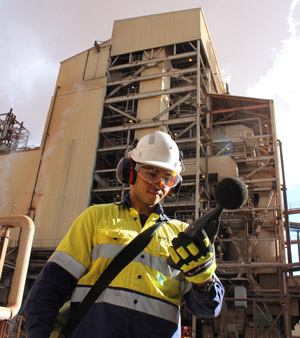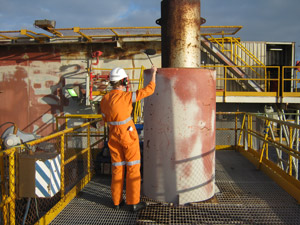Knowledge Center
- Downloads
- Technical Newsletter
- Recommended Guidelines and References
- Specifications
- Technical Papers
- Tools and Calculators
- Training
- Articles, Tips and Requirements
- An Integrated Approach to Manage Vibration Risks
- Design Requirements for Reciprocating Compressors
- Evaluating Compressor Operating Risks
- Five simple methods to check reciprocating compressor performance
- Important Differences in Pulsation Software
- Liquid Pumping Systems (Including Liquid Pipelines)
- Noise Regulations Around the World
- Noise Risks in the Gas Industry
- Performance Monitoring Examples
- Pipe Support Stiffness, GMRC Project
- Piping Vibration Design Considerations
- Piping Vibration Examples
- Structural Vibration and Ways to Avoid It
- Tips for a Successful Project (Vibration Control)
- Transient Conditions on Small-Bore Piping
- Vendor Requirements for Piping Vibration & Integrity Assessment
- Vibration-induced fatigue (whitepaper)
- Vibration Issues Affecting Gas Compressor Facilities
- Ask the expert
Noise risks in the natural gas industry
Occupational and environmental noise risks
Noise control is a growing concern for owners and operators of production facilities and pipeline stations. Increasing environmental and occupational regulation on city, state and federal levels often require a noise impact assessment for new facilities. The risk of hearing damage to workers at a facility, or exceedance of environmental noise limits can lead to re-work, modifications or implementation of noise controls on existing stations.
Contents [ hide ]
1 Tonal and high-frequency noise
 |
| Assessing noise risks and undertaking surveys on-site involves a detailed understanding of gas compression equipment and operations. |
There is a significant risk that noise in gas compression applications is tonal, or ‘discrete frequency’ noise, which is generated by rotating equipment at a predictable frequency relating to the rotational speed of the shaft and the number of compressor vanes, fan blades, engine pistons or gear teeth. Tonal noise is characterized by pure, spectral tones that occur at a single frequency. Additionally, significant noise can be generated by high flow or pressure drop through a valve, and be transmitted for long distances along piping.
2 Occupational noise (‘inside the fence’)
Noise risks in the workplace include hearing loss, communication impairment, fatigue and impaired productivity.
As an example, we recently conducted a noise survey at a facility with four compressor stations. Tonal, high-frequency noise coming from multiple stations, exceeded allowable limits in accommodation and control room units. Tonal components in certain high-frequency bands at all assessed stations and a tonal component in the low-frequency band at one compressor station were identified as being significant contributors to overall levels.
Detailed sound intensity measurements were analyzed on the compressor unit and engine to identify the exact breakout and provide an engineered solution. In this case, lagging was added in targeted locations on the air inlet and the compressor units. Larger silencers were also added to the engines. This example illustrates that noise solutions can eliminate problematic noise levels for operators.
3 Environmental noise (‘outside the fence’)
Environmental noise around gas production and transmission facilities can cause annoyance, sleep disturbance and a decrease in local property values. This can impact the relationship between the operator and the local community, prompt regulator action or lead to noise related lawsuits. Since smaller compressor stations can be installed in reasonably close proximity to residential premises, residential noise complaints have become a frequent cause for station modifications.
In this example, high noise levels were present during commissioning of a compressor station on a site’s boundary, and non-compliance with the assigned environmental noise limits was identified. The noise consultant called by the operator confirmed that at 63 dBA, noise levels on the boundary of the site were above the assigned limits. Using sound intensity equipment, a scan of the compressors was completed. The exhaust piping was identified as the dominating noise source, and the installation of acoustic lagging on the pipes was recommended. A follow-up survey confirmed that the noise was brought down to 50 dBA, ensuring compliance below the assigned levels.
 |
| Engineer undertaking a sound intensity survey to quantify noise emissions and determine sound power levels. Based on survey information, a predictive noise model for the facility can be developed in order to targeted and optimize noise control implementation and reduce occupational and environmental noise risks to acceptable levels. |
4 Common causes of noise issues
A large number of noise troubleshooting jobs are due to acoustic ‘weak-spots’ in a package. These acoustic ‘weak-spots’ do not fall into any predictable pattern, and consultants find different reasons for high noise emissions:
Typical noise sources are often due to poor design. This can include:
- Air intake duct bellows or transition pieces
- Uninsulated piping
- Exhaust ducts
- Noisy valves (with poorly selected valve-trim)
- Cooling fans
Untypical noise sources can be caused by location-specific construction or maintenance issues, such as:
- Steel structures
- Enclosure roofs
- Mechanical contact between surfaces
- Fan belts
The best approach to address noise risks and avoid costly changes later is to conduct a noise assessment early in the design stage and incorporate appropriate controls into package selection. If not covered during design, targeting acoustic weak spots with a detailed survey, and implementing appropriate controls, can mitigate high noise levels in order to meet regulatory requirements for occupational health and the environment.
Visit our noise management pages or contact a noise experts for more information and support.
Related Pages
Noise regulations around the world • Noise management •
Free webinar
Learn how to select and design vibration control solutions that work – using real-world data and case studies. Register now



